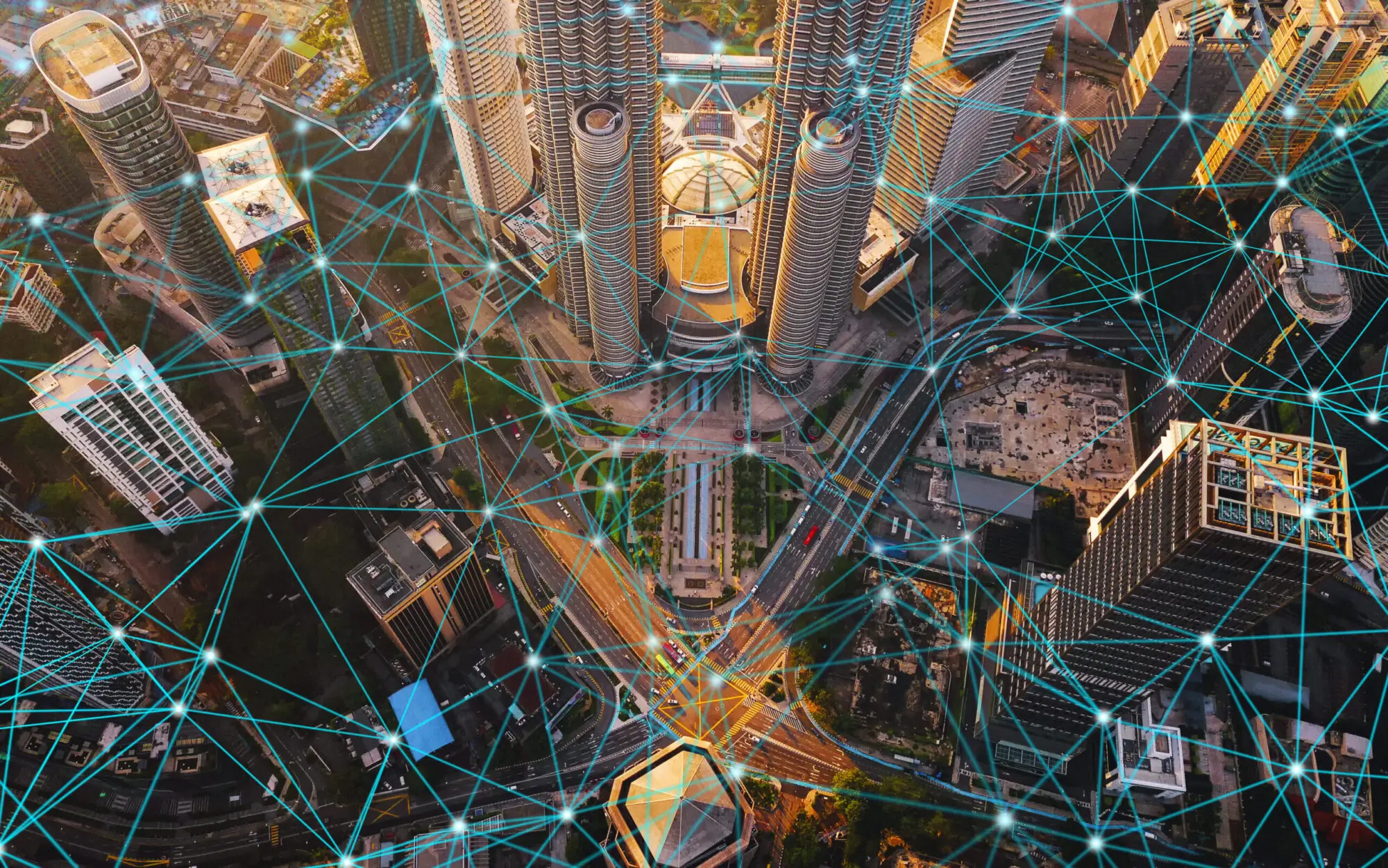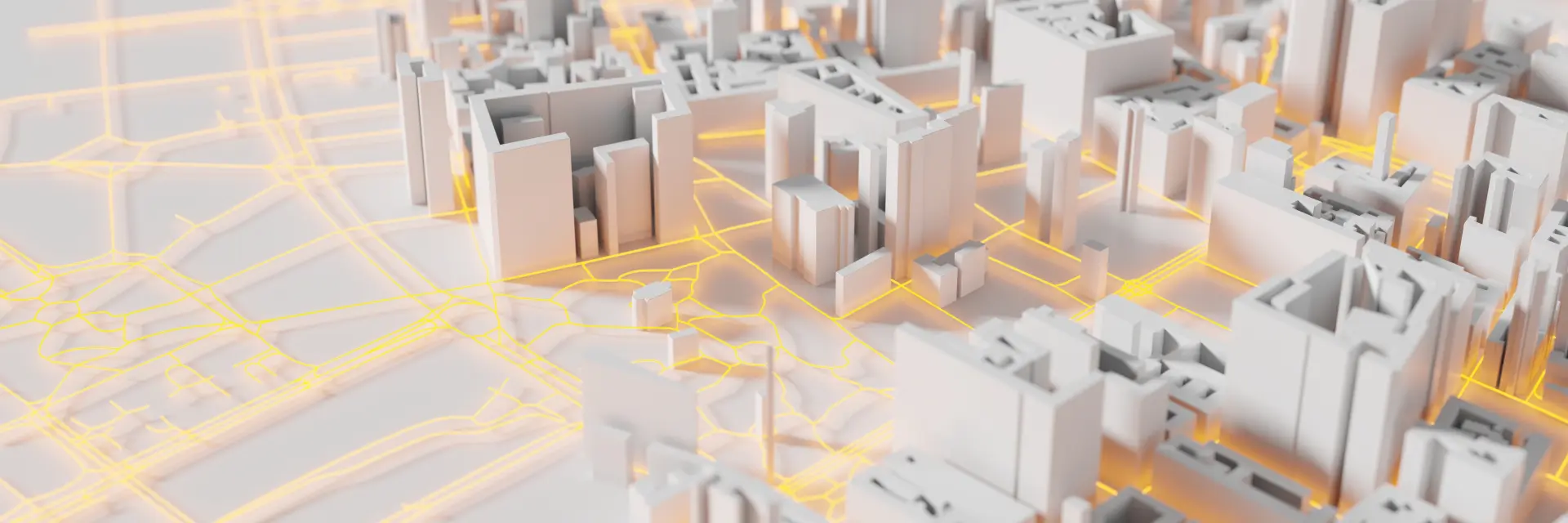The Rise of Digital Twins: Bridging the Gap between Physical and Digital Worlds

Digital twins have emerged as powerful tools revolutionizing various industries, starting with manufacturing, where they were initially used to create virtual models of physical products.
These virtual replicas serve as mirrors of their physical counterparts, enabling testing, optimization, and simulation. Over time, the concept of digital twins has expanded beyond manufacturing, extending into urban environments, where they offer invaluable insights and opportunities for interaction and analysis, revolutionising urban planning, asset management, and sustainability efforts.
Transforming the Urban Landscape
Digital twins are virtual ecosystems that bridge the gap between the physical and digital realms. In the urban context, they facilitate the creation of virtual models of cities and natural systems, capturing real-world assets, monitoring their performance, and predicting outcomes. By incorporating geospatial technology, Building Information Modelling (BIM), and interactive 3D, digital twins simulate facilities, cities, and natural systems, allowing for the analysis of diverse data models and sets. These twins empower urban planning by simulating scenarios, reducing environmental impacts, and supporting informed decision-making.
Gemini Principles
The Centre for Digital Built Britain established the Gemini principles, which require digital twins to be purposeful, trustworthy virtual ecosystems that improve management and decision-making in the real world. Urban digital twins based on 3D city models offer real-time data, support analysis, simulation, and prediction, and address social and economic functions. It’s essential to involve humans in understanding the local context to create digital twins that truly add value to public services and asset maintenance.

Unleashing the Potential of Digital Twins in Asset Management
Digital twins offer a host of benefits for asset management, making them indispensable for industry players. By providing virtual replicas of physical assets, digital twins enhance design, construction, material optimisation, and user experience. For real estate owners, effective management of building data is often a challenge, resulting in wasted potential and underperformance. Embracing digital twins can increase asset value by reducing production costs, improving visibility for facility managers, enforcing warranties, and minimising machinery downtime. Moreover, these virtual replicas enhance tenant retention, automate compliance processes, and enable data-driven decision-making across the organisation. The insights offered by digital twins empower the workplace with richer information, driving savings throughout the building lifecycle and leading to increased asset valuation.
Catalysts for Sustainability
The need to address sustainability challenges is more pressing than ever, and digital twins play a vital role in unlocking their potential. The built environment is responsible for approximately 40% of global greenhouse gas emissions, necessitating a focus on reducing its impact. By gathering data and guiding actions, digital twins facilitate effective forecasting, informed emissions monitoring, resource optimisation, and improved efficiency, well-being, and resilience. They can also uncover previously unknown aspects of assets, processes, or systems, enabling informed decisions that align with sustainability goals. Implementing digital twins leads to reduced errors, increased productivity, operational efficiency, improved employee safety and well-being, and actionable insights for emissions reduction and resource management. From energy demand reduction to renewable energy provision and life cycle management, digital twins offer pathways to achieve net-zero objectives and contribute to emissions reduction efforts.
Challenges and Considerations
While digital twins offer immense potential, several challenges need to be addressed for successful implementation. Data quality, integration, and security are paramount concerns that require robust solutions. Interoperability and standardisation are critical for effectively integrating data from disparate sources. Clear definitions and expectations are necessary to avoid misunderstandings and conflicts among stakeholders. Moreover, urban digital twins must incorporate public participation, foster collaboration among various parties, and encompass social and legal perspectives to ensure holistic success. Technology vendors play a crucial role, but a broader understanding of technology is essential to create liveable cities and address urban challenges effectively.
Conclusion
Digital twins have emerged as powerful tools that bridge the gap between the physical and digital worlds. Offering unprecedented insights and opportunities for optimisation, their transformative potential extends from manufacturing to urban planning, asset management, and sustainability efforts. By embracing digital twins and addressing the associated challenges, stakeholders can unlock unprecedented insights, optimize operations, and make data-driven decisions. With careful implementation and a socio-technical perspective, digital twins can unlock the potential or our physical assets and pave the way for a smarter, more sustainable future.

Positive Impact Panel Session: Digital Twins for Sustainable Construction
When: 25 July 2023
Where: Online
Join us for our latest instalment of our Positive Impact Panel series. This month, we’ll be exploring the use of digital twins in the construction sector and how they can support sustainability efforts.
Our panel of experts will discuss the opportunities and challenges of using digital twins to reduce the carbon footprint of the built environment, as well as how they relate to GIS and BIM.
